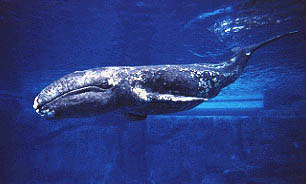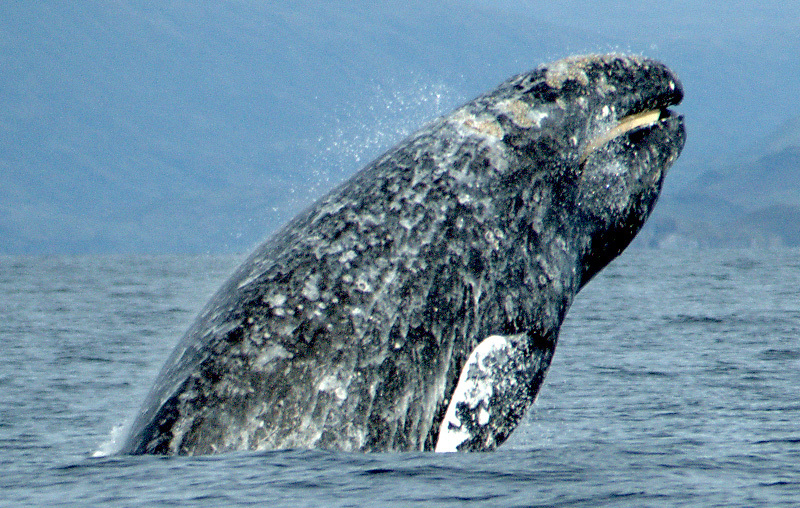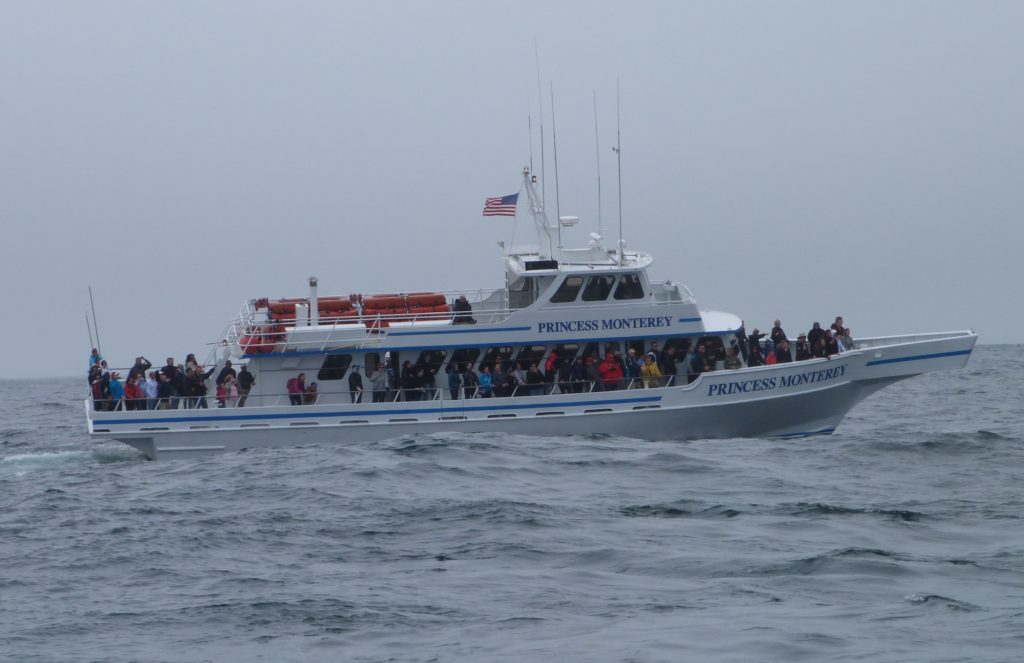One of the great success stories of conservation is the recovery of the eastern North Pacific Ocean population of the gray whale. It has recovered to its pre-exploitation levels, allowing the U.S. to remove it from the endangered species list.

The gray whale (Eschrichtius robustus) is a special kind of whale. It is the only species in its family and is believed to be the most ancient of living whales. It is a baleen whale, which refers to a series of keratin plates that hang from the roof of its mouth and allow it to filter small organisms in the ocean’s water. Baleen whales swim through the water with their mouths open, collecting huge amounts of water and organisms; then they partially close their mouths, with the baleen plates forming a filter. They push the water out, and the food organisms collect on the inside of the baleen plates. The whales use their massive tongues to scrape the food from the baleen plates and swallow.
What makes gray whales unique is that they feed on the bottom, rather than in the water column like other baleen whales (blue and right whales, for example). They dig into the bottom substrate in shallow water, using their snouts or rolling along the bottom, sending clouds of sediment and organisms into the water. The whales then take in huge mouthfuls of the mixture, spit out the water and muck, and eat what is left. What fun!

Gray whales also make extensive migrations, perhaps the longest among all mammals. Individuals spend the summer months grazing in the Bering and Chukchi Seas off Alaska and Russia. As autumn arrives, they migrate south along the Canadian and U.S. Pacific coasts, down to Baja California in Mexico, where females give birth to a single calf. The total migration is over 10,000 miles per year.
Whalers nicknamed the species “devilfish” because the whales fought ferociously when harpooned or to protect their calves. Nonetheless, other characteristics made them a desirable target. Because gray whales travel close to shore on their migrations, they have always been vulnerable to hunting. Individuals are large, but manageable (about 45 feet long and weighing 45 tons) for hunters, both aboriginal and commercial. Consequently, the gray whale was hunted to near extinction by the 1860s, shrinking from a pre-industrial abundance of about 30,000 to a low of 2,000.

Conservation efforts stopped the exploitation. The gray whales were (and are) protected under the Marine Mammal Protection Act, the International Whaling Commission’s moratorium on commercial whaling (learn more about the IWC here), and listing as an Appendix I species by the Convention on International Trades in Endangered Species (CITES) (learn more about CITES here). With little hunting mortality, the species has recovered well, growing at about 3% per year and now above 27,000 individuals. Because this is considered within the normal pre-industrial population range, the eastern population is considered recovered and was removed from the U.S. endangered species list on June 16, 1994.
The species has two distinct populations, however, and only one—the eastern—is de-listed and recovered. The western population, which lives in coastal waters of Russia and northern Asia, is nearly extinct, with perhaps as few as 200 individuals remaining; it remains on the U.S. endangered species list.
Today, the main threat to the gray whale is its popularity (tangling in fishing gear is also a worry). Because animals travel close to shore and in shallow water, the species is the main target of whale watching excursions. If whale-watching boats get too close to the whales, follow them for too long or chase them as they swim, the whales can become stressed and exhausted. Consequently, the U.S. has issued rules for whale watching—prohibiting approach closer than 100 yards and restricting viewing of individuals to no more than 30 minutes.
We all love whales, of course, but let’s be sure that we don’t love them to death.
References:
CITES. Proposal from Japan to Transfer Gray Whales to Appendix II. Available at: https://www.cites.org/sites/default/files/eng/cop/11/prop/15.pdf. Accessed February 28, 2020.
NOAA Fisheries. Gray Whale. Available at: https://www.fisheries.noaa.gov/species/gray-whale. Accessed February 28, 2020.
Save the Whales. Gray Whale. https://savethewhales.org/gray-whale/. Accessed February 28, 2020.
